Related Research Articles
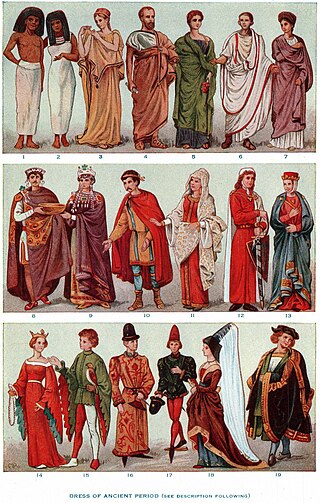
Clothing is any item worn on the body. Typically, clothing is made of fabrics or textiles, but over time it has included garments made from animal skin and other thin sheets of materials and natural products found in the environment, put together. The wearing of clothing is mostly restricted to human beings and is a feature of all human societies. The amount and type of clothing worn depends on gender, body type, social factors, and geographic considerations. Garments cover the body, footwear covers the feet, gloves cover the hands, while hats and headgear cover the head, and underwear covers the private parts.
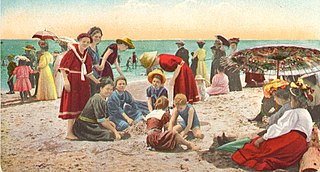
Modesty, sometimes known as demureness, is a mode of dress and deportment which intends to avoid the encouraging of sexual attraction in others. The word modesty comes from the Latin word modestus which means 'keeping within measure'.

There are typically two types of clothing worn in Japan: traditional clothing known as Japanese clothing, including the national dress of Japan, the kimono, and Western clothing, which encompasses all else not recognised as either national dress or the dress of another country.
Tzniut describes the character trait of modesty and discretion, as well as a group of Jewish laws pertaining to conduct. The concept is most important within Orthodox Judaism.
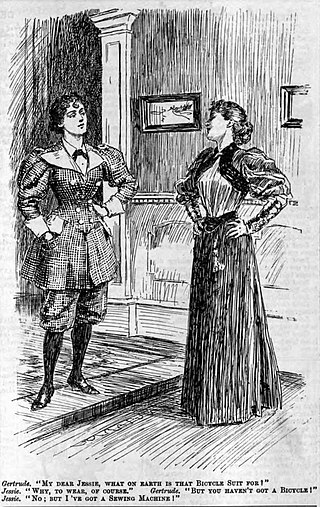
Victorian dress reform was an objective of the Victorian dress reform movement of the middle and late Victorian era, led by various reformers who proposed, designed, and wore clothing considered more practical and comfortable than the fashions of the time.

Byzantine dress changed considerably over the thousand years of the Empire, but was essentially conservative. Popularly, Byzantine dress remained attached to its classical Greek roots with most changes and different styles being evidenced in the upper strata of Byzantine society always with a touch of the Hellenic environment. The Byzantines liked colour and pattern, and made and exported very richly patterned cloth, especially Byzantine silk, woven and embroidered for the upper classes, and resist-dyed and printed for the lower. A different border or trimming round the edges was very common, and many single stripes down the body or around the upper arm are seen, often denoting class or rank. Taste for the middle and upper classes followed the latest fashions at the Imperial Court.

A dress shoe is a shoe to be worn at smart casual or more formal events. A dress shoe is typically contrasted to an athletic shoe.
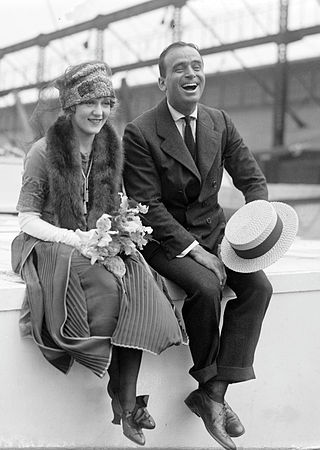
Western fashion in the 1920s underwent a modernization. For women, fashion had continued to change away from the extravagant and restrictive styles of the Victorian and Edwardian periods, and towards looser clothing which revealed more of the arms and legs, that had begun at least a decade prior with the rising of hemlines to the ankle and the movement from the S-bend corset to the columnar silhouette of the 1910s. Men also began to wear less formal daily attire and athletic clothing or 'Sportswear' became a part of mainstream fashion for the first time.

The preservation of fabric fibers and leathers allows for insights into the attire of ancient societies. The clothing used in the ancient world reflects the technologies that these peoples mastered. In many cultures, clothing indicated the social status of various members of society.

A dress is a garment traditionally worn by women or girls consisting of a skirt with an attached bodice. It consists of a top piece that covers the torso and hangs down over the legs. A dress can be any one-piece garment containing a skirt of any length, and can be formal or casual.

Trousers or pants are a staple of historical and modern fashion. Throughout history, the role of trousers is a constant change for women. The first appearance of trousers in recorded history is among nomadic steppe-people in Western Europe. Steppe people were a group of nomads of various different ethnic groups that lived in the Eurasian grasslands. Archaeological evidence suggests that men and women alike wore trousers in that cultural context. However, for much of modern history, the use of trousers has been restricted to men. This norm was enforced in many regions due to social customs and laws. There are, however, many historical cases of women wearing trousers in defiance of these norms such as the 1850s women rights movement, comfort, freedom of movement, fashion, disguise, attempts to evade the gender pay gap, and attempts to establish an empowered public identity for women. Especially in the 20th and 21st centuries, the customs and laws restricting this manner of dress have relaxed dramatically, reflecting a growing acceptance and normalisation of the practice.
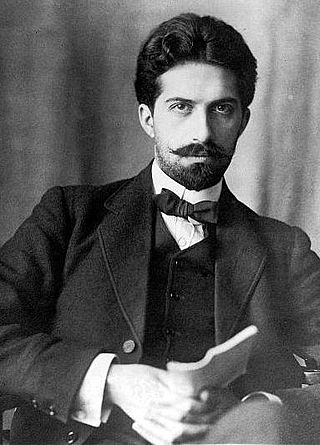
Caleb Williams Saleeby FRSE was an English physician, writer, and journalist known for his support of eugenics. During World War I, he was an adviser to the Minister of Food and advocated the establishment of a Ministry of Health.

Ancient Egyptian clothes refers to clothing worn in ancient Egypt from the end of the Neolithic period to the collapse of the Ptolemaic Kingdom with the death of Cleopatra in 30 BC. Egyptian clothing was filled with a variety of colors. Adorned with precious gems and jewels, the fashions of the ancient Egyptians were made for not only beauty but also comfort. Egyptian fashion was created to keep cool while in the hot desert.

The Great Male Renunciation is the historical phenomenon at the end of the 18th century in which wealthy Western men stopped using bright colours, elaborate shapes and variety in their dress, which were left to women's clothing. Instead, men concentrated on minute differences of cut, and the quality of the plain cloth.
The semiotics of dress is the study of design and customs associated with dress (clothing), as patterned to a kind of symbolism that has rules and norms. It describes how people use clothing and adornments to signify various cultural and societal positions.

Fashion and clothing in the Philippines refers to the way the people of the Philippine society generally dress up at home, at work, travelling and during special occasions.
The Sunlight League was founded in England in 1924 by C. W. Saleeby. Its aim was: "to point to the light of day, to advocate its use for the cure of disease—"helio-therapy"; and, immeasurably better, for preventive medicine and constructive health, the building of whole and happy bodies from the cradle and before it, which we may call helio-hygiene".

The Women's Suffrage Movement in the Western world influenced changes in female fashions of the early 1900s: causing the introduction of masculine silhouettes and the popular Flapper style.

Eugenic feminism was a component of the women's suffrage movement which overlapped with eugenics. Originally coined by the eugenicist Caleb Saleeby, the term has since been applied to summarize views held by some prominent feminists of the United States. Some early suffragettes in Canada, particularly a group known as The Famous Five, also pushed for eugenic policies, chiefly in Alberta and British Columbia.

Therese Mirani was an embroiderer and teacher, who was director of the Imperial and Royal School for Art Embroidery of the Ministry of Commerce in Vienna. She invented a new type of lacework, points imperial, and a new technique of embroidery, broderie dentelle, which was collected by Empress Elisabeth of Austria. She was awarded an Imperial and Royal Warrant of Appointment.
References
- 1 2 3 4 5 6 7 Burman, B. (1995). "The Better and Brighter Clothes: The Men's Dress Reform Party, 1929 1940". Journal of Design History. 8 (4): 275–290. doi:10.1093/jdh/8.4.275. ISSN 0952-4649.
- 1 2 3 4 5 6 7 8 9 10 11 12 Bourke, J. (1996). "The Great Male Renunciation: Men's Dress Reform in Inter-war Britain". Journal of Design History. 9 (1): 23–33. doi:10.1093/jdh/9.1.23. ISSN 0952-4649.
- ↑ Sadar, John Stanislav. (2016). Through the Healing Glass: Shaping the Modern Body through Glass Architecture, 1925-1935. Routledge. p. 106. ISBN 978-1-138-83780-5
- ↑ Flugel, John Carl (1930). The Psychology of Clothes. London: Hogarth. pp. 110–113.